A Secret Sale Might be Prior Art and Bar Patentability
January 31, 2019
- Enactment of the Leahy-Smith America Invents Act (AIA) did not change the meaning of the on-sale bar under 35 U.S.C. § 102.
- Under the AIA, a company’s commercial sale of an invention may bar the invention from patentability, even if the sale keeps the invention details secret.
- If the sale itself is not publicly disclosed, the sale may still bar patentability.
Under 35 U.S.C. § 102, a sale or offer for sale of an invention may bar patentability. Prior to enactment of the AIA in March 2013, § 102 barred patentability of an invention “on sale” in this country more than one year prior to the date of application for patent. In enacting § 102(a)(1), the AIA retained the “on-sale” language, but also added the catchall phrase “or otherwise available to the public.” In Helsinn Healthcare S.A. v. Teva Pharmaceuticals USA, Inc., the Supreme Court determined that the AIA did not alter the settled meaning of “on sale” by adding the catchall phrase “otherwise available to the public.” The Court concluded that the settled meaning of “on sale” does not require that the invention be made available to the public. Accordingly, the Court held that a sale to a third-party who is contractually obligated to keep the invention confidential (not available to the public) may bar the invention’s patentability.
In Helsinn Healthcare S.A. v. Teva Pharmaceuticals USA, Inc., Helsinn produced drugs containing palonosetron and entered into agreements granting rights to sell a 0.25 dose palonosetron drug. The agreements were announced in a press release and SEC filing, neither of which disclosed the dose information that was contractually required to be kept confidential. About two years later, Helsinn filed a provisional patent application covering the 0.25 dose drug. Helsinn filed a patent application claiming priority to the provisional application, and it was issued as U.S. Patent No. 8,598,219.
Helsinn sued Teva in Federal District Court for infringing this patent. Teva countered that the patent was invalid because the 0.25 dose drug was “on sale” more than one year prior to the provisional filing. The District Court concluded that the AIA addition of the catchall phrase “otherwise available to the public” changed the meaning of the on-sale bar to require that a sale make invention details available to the public. As Helsinn’s public disclosures did not disclose the dose, the on-sale bar was held not to apply. On appeal, the Court of Appeals for the Federal Circuit concluded that the catchall phrase did not change the meaning of “on sale” regarding public sales and that the invention details need not be publicly disclosed. Given that Helsinn’s agreements were publicly disclosed, the on-sale bar was held to indeed apply even though the dosage was not disclosed.
On appeal, the Supreme Court affirmed the Federal Circuit decision but went a step further to conclude that the on-sale bar was not changed by the AIA. The Court reasoned that the addition of the catchall phrase by Congress was not enough to show intent to alter the well-settled interpretation of “on sale.”
The Court further concluded that in the interpretation, a sale or offer need not make an invention available to the public. The Court looked to its earlier decision of Pfaff v. Wells Electronics, Inc., 525 U.S. 55 (1998) that established an invention must only be “the subject of a commercial offer for sale” and “ready for patenting” for the on-sale bar to apply. The Court determined that under Pfaff, a sale could cause an inventor to lose the right to patent, regardless of whether the sale kept the invention details secret. The Court also reasoned that other precedential cases did not focus on whether the invention details were made available to the public or if the sale itself was publicly disclosed, but rather on whether the invention was sold. Note, although the Court did not specifically conclude that the AIA includes sales where the sale itself is not publicly disclosed, the Court referenced cases where such sales invalidated a patent.
In view of Helsinn, inventors and their companies must be diligent in filing for patent protection, because even if the terms of a sale or offer include a contractual obligation to keep the details of the invention and the sale itself confidential, the sale or offer may bar the company’s right to secure valid patent protection for the invention.




